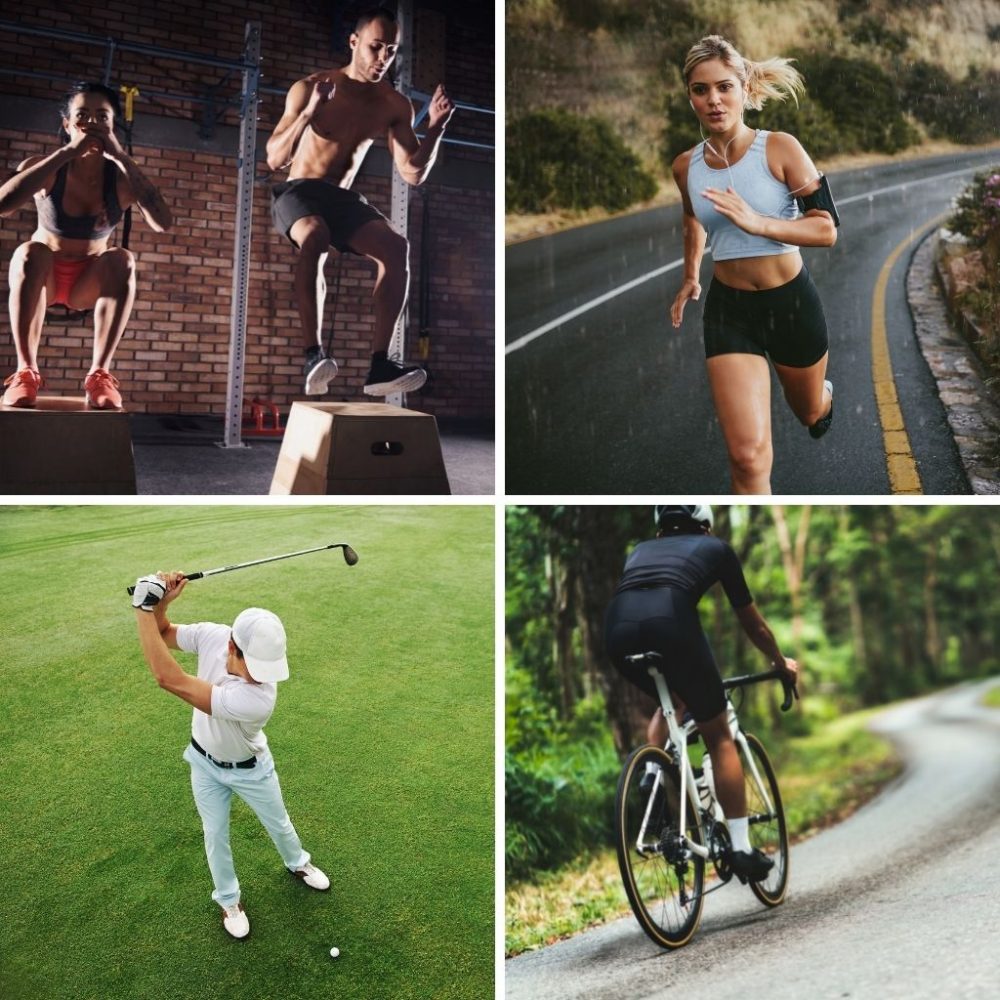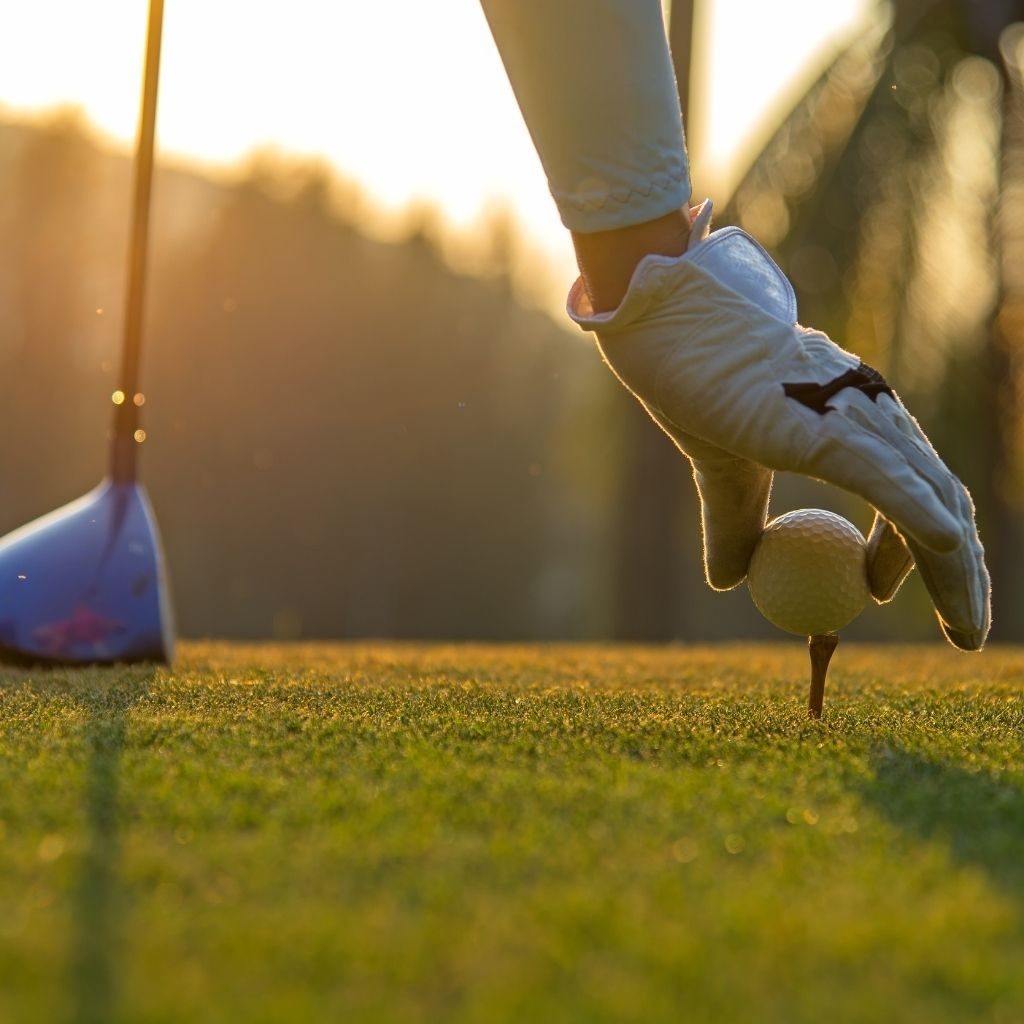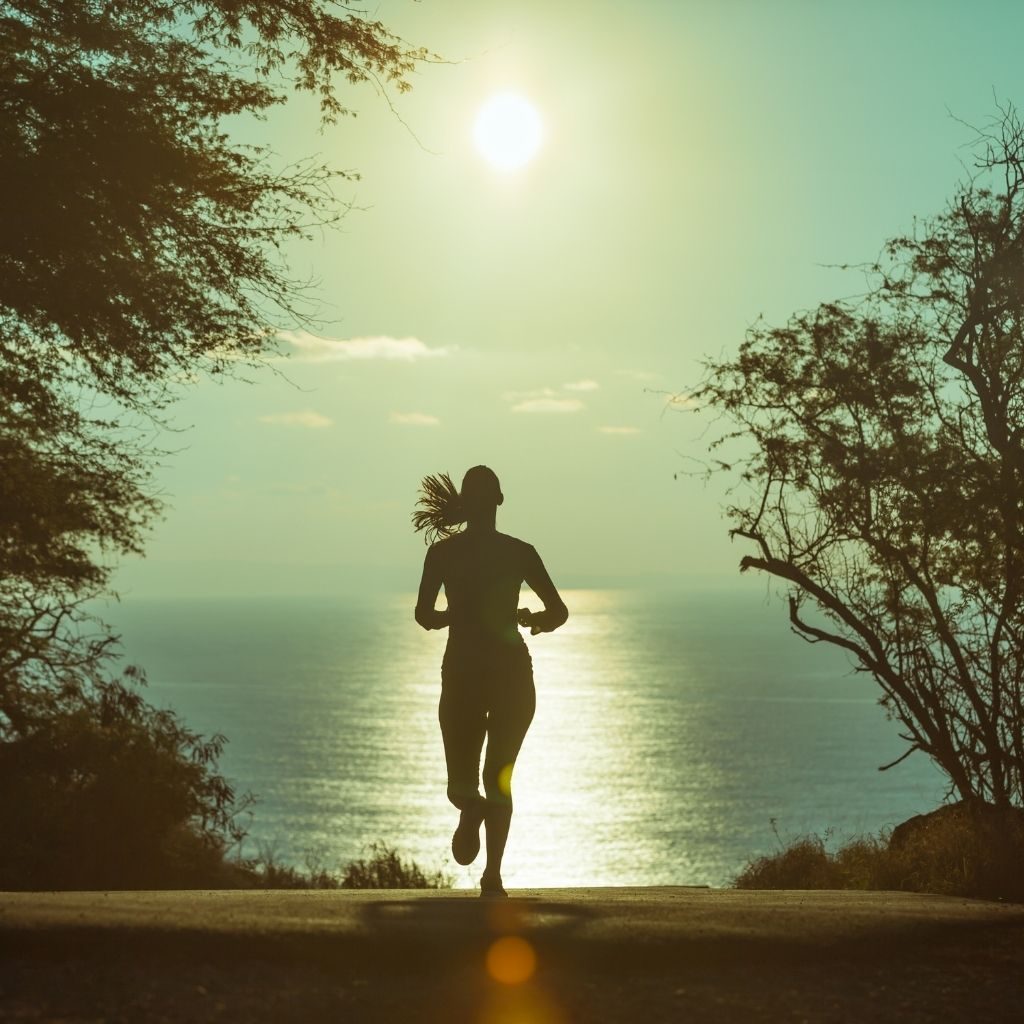Yoga vs Pilates as Complements to Golf, Crossfit, Running & Cycling
Choosing between Yoga or Pilates to improve balance, flexibility, and strength for your sport can be challenging. However, both disciplines have fantastic benefits that can improve your game if targeted well.

Through many controlled studies and anecdotal evidence, Yoga has been shown to increase core strength, flexibility, and proprioception.
Pilates, on the other hand, is designed to build overall core and lower body strength and improve posture, balance, and control.
While Yoga focuses on being mindful and balancing mind, body, and spirit, pilates is focused more on strengthening muscles, emphasizing the core.
This article shows the various advantages of incorporating both yoga and pilates in your practice routine so you can decide which poses work best for your chosen sport.

Yoga or Pilates for Crossfit
Crossfit, marketed as intense cardio and neuromuscular training workout, has gained increasing popularity over the past few years.
However, many new crossfitters find that their progress can slow down if they don’t increase their core strength and flexibility.
If you are a crossfitter and are looking to improve your core strength and flexibility, you should consider trying both Pilates and Yoga.
How does yoga help your CrossFit performance?
Yoga offers many benefits for cross-fitters, including increased flexibility, core strength, and improved mental balance.
You can use yoga to target specific muscles and muscle groups that are often overlooked in a regular CrossFit workout and help relieve tightness in muscles that may be strained from hard training.
For example, yoga will help stretch tight hip flexors from squats and lunges. In addition, poses like the Fire Log Pose or Standing Wide Leg Forward Bend pose will help relieve tightness in the hips while still building core strength in the abdominal muscles.
Yoga also offers incredible benefits to the mind. Yoga is focused on being present in the moment and being mindful of your breath. In 15 to 30 minutes per day, yoga can effectively improve the balance, flexibility, and strength required for CrossFit.
How does Pilates help your CrossFit performance?
Pilates is designed to build muscle strength with a focus on the core muscles.
It can also be effective in training for gymnastics and other sports that require balance when not moving around.
The exercises also focus on the hip flexors, lower back, and shoulders and strengthen the core muscles to stabilize weight while improving posture.

You may also like 👉 Does Ashtanga Yoga Help You Lose Weight?
Yoga or Pilates for Golf?
Incorporating Yoga and Pilates as part of a golf workout routine is beneficial for the core muscles and the upper body and lower back muscles.
In golf, you want to maintain a good posture while standing on the tee or fairways.
The standing wide leg forward bend will help stretch out the hip flexors so that you have better balance when standing and a better swing at the ball.
Pilates can also be used to improve strength and posture in the lower back.
How does yoga help your golf performance?
Two of the most common yet overlooked benefits of golf are flexibility and strength. Yoga offers various poses that will help loosen up tight shoulders, back, hips, and hamstrings.
Yoga can also help strengthen the core muscles and improve posture, which is essential to a good golf swing.
Keeping a good posture, you will relax your body while swinging and improve overall golf performance.
How does pilates help your golf performance?
Pilates can be very effective in improving overall core strength and posture. The core muscles are also critical in a golf swing, so pilates will help keep the torso strong and flexible while you are swinging.
Pilates is also effective in relieving pressure on the lower back that is common among golfers due to their posture when swinging.

Yoga or Pilates for runners?
Both yoga and pilates are great for runners to help improve balance, core strength, flexibility, and posture.
They can be especially helpful for long-distance runners who put a lot of pressure on their lower backs due to the posture they need to keep while running.
Here you have a complete breakdown of their benefits.
Yoga benefits for runners
Yoga has become a prevalent choice for runners because of the posture and breathing benefits it brings.
The core is also vital in running, and yoga offers a nice balance between flexibility and strength to the core muscles.
The squat yoga pose is very effective for releasing tight legs and opening up the hips, groin, inner thighs, and lower back muscles, all critical in maintaining good posture and keeping your lower half strong while running.
Wanna know more? 👉 In this article we compare yoga vs running across different aspects like weight loss, flexibility and more, check it out!
Pilates Benefits for Runners
Pilates is also an excellent choice for runners because the focus is on strengthening and aligning the core muscles.
Having strong muscles surrounding your spine and pelvis helps you avoid injuries such as stress fractures.
Many runners suffer from knee pain and tight hips, hamstrings, etc.; pilates will work on these areas very effectively.
People who frequently run on hard surfaces or do a lot of downhill have a higher risk of suffering injuries from the shock put on their knees and hips, so Pilates can help reduce that and strengthen the area.
Pilates side planks are an exercise that will strengthen your obliques, which will help with your core stability, balance, posture, and working out your upper body and butt.

Yoga or Pilates for Cycling?
Both pilates and yoga can be very beneficial to cyclists as they help improve balance, core strength, and alignment and increase flexibility.
Both of them will help you have the flexibility and strength to keep your posture aligned while biking to avoid injuries.
Yoga is also suitable for improving balance, especially if you are biking on an uneven surface or doing handstands or backbends like the fire log pose.
How does yoga help your Cycling performance?
In his book “The Cyclist’s Body,” Mark Verstegen writes: “Yoga can improve flexibility, decrease muscle tension and pain, increase circulation, improve balance and coordination, decrease fatigue, and support recovery.
Yoga is also effective at increasing core strength. Many poses emphasize the core, such as the Plank pose, or Upward-Facing Dog, which are excellent for building strength in the upper body while strengthening the lower body and core.
It is also an excellent choice for long-distance cycling. It will help you maintain good posture and core strength to keep your breathing, energy, and relaxation up.
Yoga is also helpful to recover from strenuous workouts, especially if they are longer than an hour.
How does pilates help your cycling performance?
Exercising with Pilates emphasizes strengthening the core muscles and improving posture.
Both of these are very important for cyclists because maintaining good posture is necessary to prevent neck, shoulder, and back pain. In addition, strengthening and strengthen the core muscles will help stabilize your upper body while riding.
The Pilates exercises that help strengthen the core muscles are very good at increasing strength without adding bulk to areas of your body such as the hips, thighs, and butt.
Pilates is also very effective at targeting individual muscle groups to relieve tightness in those groups, which is common in cyclists who may have tight hip flexors, hamstrings, and lower back.
You may also like: Yoga for Fat People: Can Overweight People Practice Ashtanga?
Conclusion
All four of these sports contain very similar movements and postures. For example, CrossFit and golf need great posture and balance, while running and cycling require strength.
Yoga is usually the most gentle option, so it’s an excellent choice for people who are just starting to exercise.
Pilates is often an option for those looking for more intense workouts because it encourages longer holds in poses. However, they are still very effective in relieving tightness and improving overall posture.
Pilates is also an excellent choice for people who have back or knee problems as it will help alleviate any pain while strengthening the joints.

